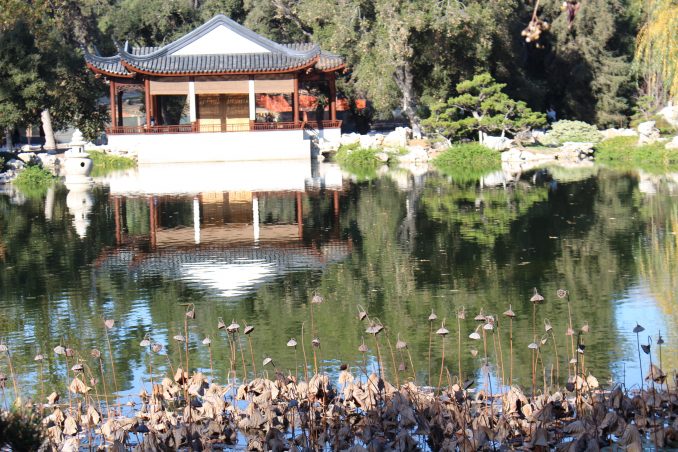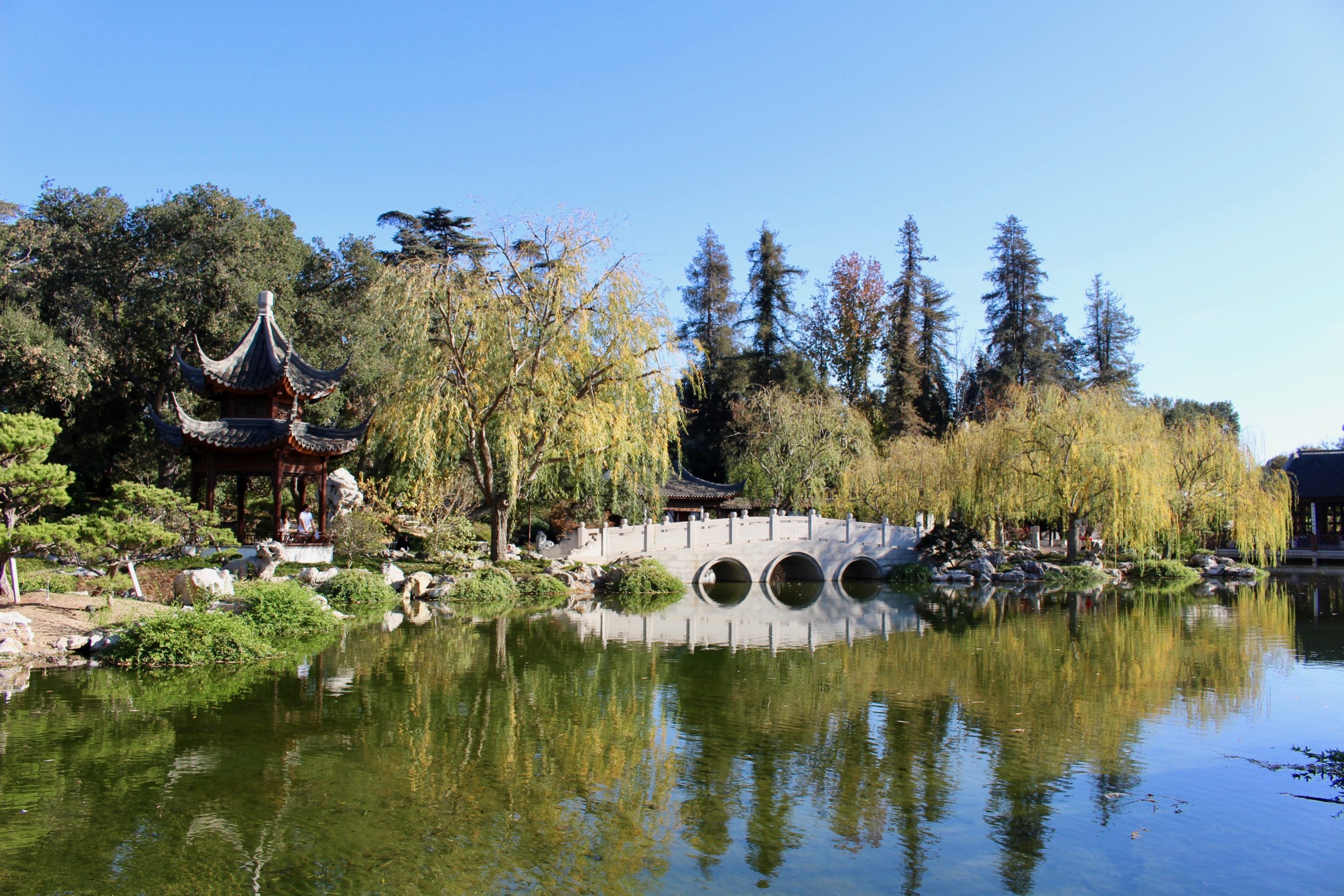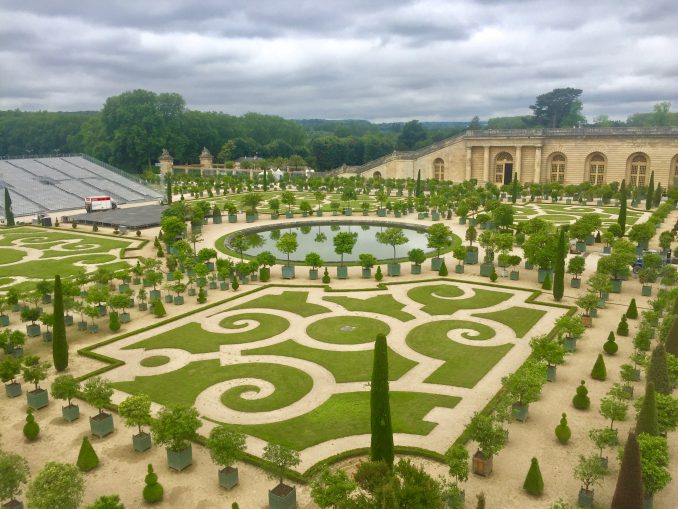Food for the Soul: Museum Gardens
“If you have a garden and a library, you have everything you need”.
Marcus Tullius Cicero (106-43 BC)
By Nina Heyn, Your Culture Scout
A typical museum of fine art is a depository of paintings, drawings and sculptures, sometimes objects of historical value, writings or artifacts (think the MET or the Tate). They fulfill the function of making beauty available to the public, providing a research and education facility, and the means of acquiring and preserving works of art that otherwise would get less accessible in private collections or even lost.
However, sometimes the heart of the museum is not its art collection but the garden that surrounds it. This is certainly the case of The Huntington in San Marino near Los Angeles, at Claude Monet’s house in Giverny in France, to great extent at Versailles and both Getty Museum locations, and at countless less illustrious sites of museums and gardens around the world.
For sheer size and scope alone, the Versailles gardens and park complex is the mother of all gardens. The Sun King, Louis XIV, transformed his hunting lodge into a sumptuous palace and the surrounding hunting grounds into 8600 hectares of structured space divided into gardens, the Small Park that contains the Grand Canal and the Trianon estate, and the Great Park reserved for hunting. After the revolution when the owners lost their heads, the décor was looted and the acreage was diminished, the present day garden and park were reduced to 1/10 of that (815 hectares) but all of it has been substantially restored with the aim of returning this to the pre-1715 splendor. The Versailles palace grounds have always been designed as an extremely structured space. Various sections of the Versailles garden are partitioned into “groves” (bosquet) where parts of greenery are fenced off in between the straight, gravel-covered alleys. These are basically open-air “rooms” with fenced hedges serving as “walls,” pathways that serve as “carpets” or “floors” and then there are sculptures, fountains, colonnades and other architectural or decorative features to enliven the look of differently themed areas. Nothing is left to chance. Trees are supposed to grow limbs in certain way (aided by a few hundred years of vigorous pruning), flowers are planted in even rows and bushes have no twig out of place.

The Grand Dauphin and Louis XIV Riding in the Gardens of Versailles, around 1600, French school.
Photo © RMN-Grand Palais (Château de Versailles)/ Gérard Blot
Versailles gardens were open to the public from the start in 1682 and the king took daily walks to admire fountains (to save water they would be turned on whenever he was approaching a specific fountain), an ever-growing collection of statues, most of which were created during his reign (antiquities and a lot of originals have by now been removed to the Louvre to avoid weather damage), and extensive tree and flower collections. To this day, once you have visited the overwhelming amount of palace’s golden apartments and galleries, the garden grounds are a welcome respite for the senses. There is a breath of vision in them and sense of discovery when you wander from one green “room” to another.

Garden of Flowing Fragrance at the Huntington Library and Gardens. Photo: Nina Heyn
The Huntington Library and Gardens, located on the edge of city of Pasadena, started out as a residence of Henry Huntington, a 19th century industrialist who, like other tycoons of the era had a collector’s itch and unlike the others – a great vision and taste. In 1913 he married Arabella Collis, a widow of his uncle, and together they created a library collection and transformed a working ranch into a botanical garden. They collected such treasures as a vellum version of the Gutenberg’s Bible, Thomas Gainsborough’s famous painting “Blue Boy,” and a collection of early maps and scientific instruments. The residence is nestled on a little hill with views of Verdugo and San Gabriel Mountains and big swaths of East Los Angeles. The pride of the property was the garden created by Arabella. Today the Huntington attracts scientists, educators and visitors to its research facility, 120 acres of various climate and style gardens and 50,000 dry-climate plants.
When you walk around Huntington, you can seamlessly move from an Australian garden, a desert succulents garden, through one of the largest world collections of camellia varieties and towards an herb garden or a jungle garden. There are many different botanical enclaves at the estate: a small and charming “Shakespeare garden” that has a collection of flowers and plants mentioned in his plays, and a famous Japanese garden that includes a traditional wooden house, a walled Zen garden, a bonsai collection and a red crescent bridge that was used as a backdrop of the movie Memoirs of the Geisha. One of the newer and charming structures at the Huntington is a tropical conservatory with a hands-on area where kids can experiment on plants’ sugar content and learn about ecology.

Garden of Flowing Fragrance at the Huntington Library and Gardens. Photo: Nina Heyn
The latest addition and a pearl in Huntington’s garden crown is the Garden of Flowing Fragrance, a re-creation of a traditional style of famed Suzhou gardens in China with its still-expanding collection of pavilions, viewpoints and bridges around an artificial lake. A joint effort of the Huntington, several Chinese and American foundations and some major companies and donors allowed this amazing garden to be a taste of China brought to Southern California. Gardens are a big part of Chinese culture. There is a specific expression shang hua just to describe an activity of admiring flowers that are in bloom. In Chinese art and culture flowers and fruit represent certain seasons, an artistic or moral reference, a poetic metaphor or some symbolism. The Garden of Flowing Fragrance is full of flowers and plants that combine native California plants like oak trees with seasonal flower arrangements that are spaced around decorative lime rocks brought from lake Tai (such rocks are famous for their dramatic twisting shapes and they have been collected and used to decorate imperial palaces for centuries). Traditional red pavilions with their graceful traditional shapes and wood carvings offer various viewpoints towards the lake or inscriptions on rocks and wood plaques. A traditional Chinese garden will always strive towards a harmony between greenery and architecture or decorative features. Poetry verses carved on rocks or sculptures displayed throughout are part of the classical garden arrangement as well.
Both Versailles and the Huntington are places where gardens have been created as an integral part of their architectural and artistic plans. However, there are many museums where a garden is not as prominent or sumptuous but still a source of great pleasure and an unexpected art experience. Sometimes a museum has a sculpture garden, sometimes an herb garden or may be just a quiet viewpoint but it would always be an additional art experience. Next time you go to a museum check out its garden…

